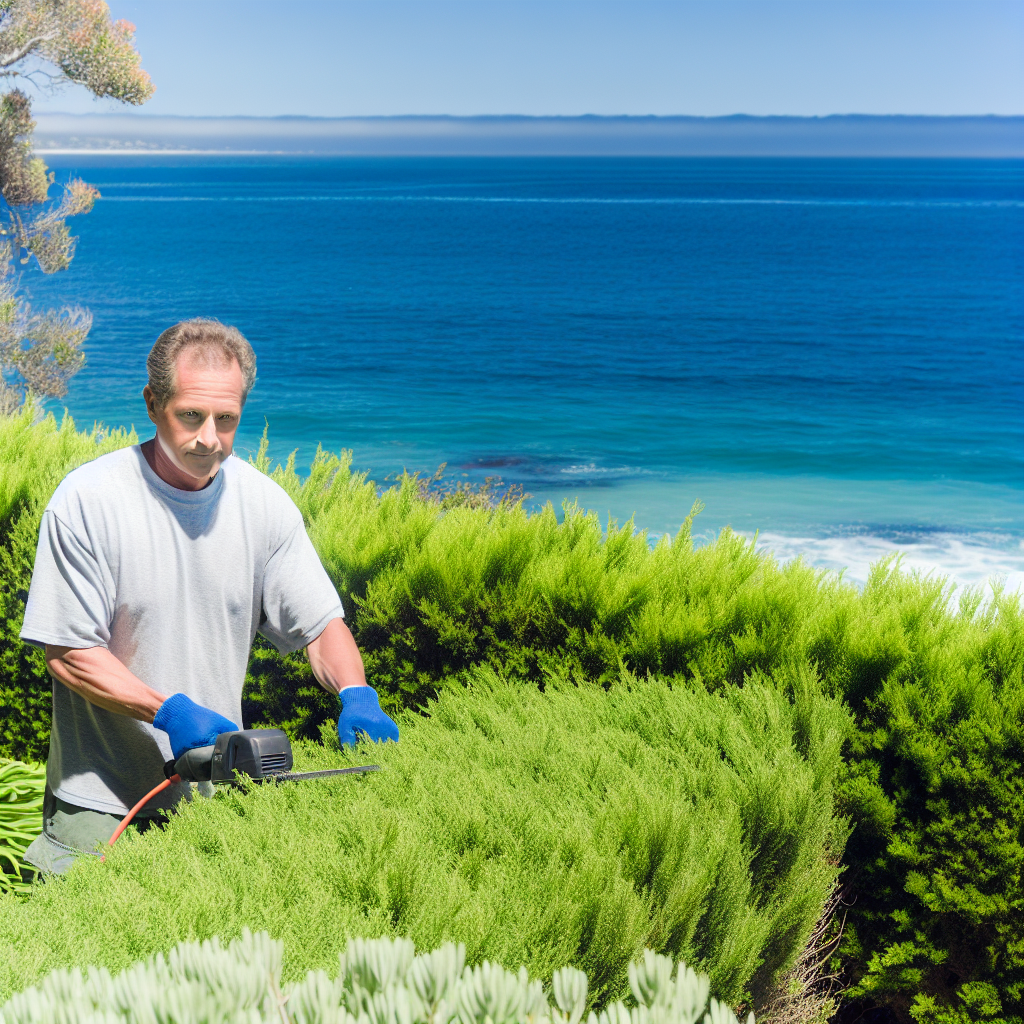Understanding the Unique Challenges of Waterfront Properties
Environmental Factors
Waterfront properties face unique environmental challenges.
Flooding is a significant concern for many owners.
Seawater can cause corrosion on buildings and infrastructure.
Additionally, erosion affects the land’s integrity over time.
Extreme weather events can lead to increased maintenance needs.
Maintenance Implications
Regular inspections are essential for waterfront properties.
Owners should evaluate their structures frequently.
Maintenance tasks often include checking for water damage.
Upkeep of the landscape is also crucial.
Hiring professionals for specialized work can save time and money.
Legal and Regulatory Considerations
Waterfront property owners must be aware of local regulations.
Permits may be necessary for construction or renovations.
Violations can lead to hefty fines or legal issues.
Additionally, zoning laws can impact property usage.
Consult with local authorities to ensure compliance.
Community and Lifestyle Factors
Living near water promotes a unique lifestyle for residents.
Community activities often center around water-based recreation.
Interaction with neighbors increases as properties are often close together.
However, this proximity can lead to shared responsibilities.
Forming associations can help manage maintenance collectively.
Seasonal Maintenance Checklist for Waterfront Property Owners
Spring Maintenance Tasks
Spring marks an essential time for waterfront property owners.
Start by inspecting your property’s landscaping.
Check for signs of erosion around the shoreline.
Address any water drainage problems promptly.
Next, clean out gutters and downspouts to prevent clogging.
In addition, inspect your dock for damages from winter storms.
Make necessary repairs to ensure safety and functionality.
Summer Tasks
Summer maintenance focuses on enjoyment and upkeep.
Maintain your lawn and garden with regular watering and trimming.
Watch for invasive plants that may threaten your landscape.
Regularly clean your boat and outdoor furniture.
Additionally, check alarms and safety gear for boating.
Visual inspections of the property should happen frequently.
Fix any minor issues before they become major problems.
Autumn Preparations
As autumn approaches, focus on preparing your property for winter.
Clear fallen leaves to prevent decay on lawns and paths.
Drain and store outdoor hoses and irrigation systems.
Inspect and clean your heating system before the cold hits.
Check for any signs of pest infestations in and around your home.
Seal windows and doors to improve energy efficiency.
Winter Responsibilities
Winter demands extra attention to prevent damage.
Regularly check the ice levels on your waterfront.
Maintain your heating system to avoid freezing pipes.
Inspect your roof for snow accumulation and remove excess.
Ensure all pathways are clear and salted for safety.
Plan for spring maintenance during this downtime.
Keep records of repairs and maintenance for future reference.
Preventing Water Intrusion and Damage: Best Practices
Understanding Water Intrusion
Water intrusion occurs when unwanted water enters a property.
This situation can lead to severe damage and costly repairs.
Understanding the causes of water intrusion is critical for prevention.
Regular Inspections
Conducting regular inspections is essential for property maintenance.
Check for cracks in foundations and walls during these inspections.
Inspect your roofing for missing or damaged shingles.
Ensure your gutters are clean and functioning properly.
Sealing and Waterproofing
Sealing cracks can prevent water from entering your property.
Use high-quality sealants where needed to create a barrier.
Consider waterproofing your basement and crawl spaces.
This additional layer of protection minimizes water intrusion.
Proper Drainage Systems
Effective drainage systems redirect water away from your property.
Install downspouts that direct water at least five feet away.
Ensure grading around your home slopes away from the foundation.
Consider installing French drains in areas prone to flooding.
Lawn and Landscape Management
Your lawn and landscaping can significantly impact water runoff.
Avoid planting large trees and shrubs near your foundation.
Maintain vegetation to prevent soil erosion around your property.
Utilize rain gardens to absorb excess water in your yard.
Emergency Preparedness
Prepare for potential water intrusion events with emergency kits.
Include essentials like flashlights, batteries, and water.
Understand how to turn off utilities in the event of flooding.
Have a plan in place for dealing with water intrusion during storms.
You Might Also Like: Expert Tips For Navigating Contracts On Luxury Ski-In/Ski-Out Property Sales
Choosing the Right Landscaping for Waterfront Environments
Understanding the Unique Challenges
Waterfront properties face unique maintenance challenges.
High humidity levels can impact plant health.
Moreover, insects and pests thrive in these environments.
Saltwater can also damage non-native vegetation.
Therefore, choosing resilient and suitable plants is crucial.
Selecting Native Plants
Native plants are well-adapted to local conditions.
They typically require less water and maintenance.
For instance, coastal grasses and sedges thrive near shorelines.
Similarly, native shrubs like beach plum provide habitat for wildlife.
Consider consulting a local nursery for recommendations.
Creating a Balanced Landscape Design
A balanced design enhances the beauty and function of your property.
Include a mix of vegetation, hardscaping, and open spaces.
Pathways can direct foot traffic while preventing erosion.
Mulching around plants can retain moisture and suppress weeds.
Furthermore, incorporating seating areas encourages outdoor enjoyment.
Implementing Erosion Control Measures
Erosion is a significant concern for waterfront owners.
Use plants with deep root systems to stabilize soil.
Consider installing retaining walls or rip-rap for added protection.
Additionally, native grasses can trap soil and reduce runoff.
Regularly monitor soil conditions to manage any erosion issues.
Water Management Strategies
Effective water management is key for healthy landscaping.
Implement rain gardens to capture and filter runoff.
Furthermore, use permeable materials in driveways to reduce flooding.
Consider installing irrigation systems that conserve water.
Lastly, resist overwatering to prevent plant stress.
Maintaining Landscape Health
Regular maintenance ensures the longevity of your landscaping.
Schedule seasonal pruning and inspections for plant health.
Keep an eye out for invasive species that may take over.
Routine mulching can support moisture retention and soil health.
Lastly, engaging local landscapers can provide expert guidance.
See Related Content: How To Choose The Perfect Waterfront Property For Your Needs
Essential Upkeep of Docks and Boathouses
Regular Inspections
Conduct regular inspections of your dock and boathouse.
Check for visible signs of wear and tear.
Look for loose boards and potential hazards.
Inspect the structural integrity of support beams.
Ensure that all safety features are intact.
Cleaning and Maintenance
Keep your dock free from debris and algae.
Use a pressure washer for thorough cleaning.
Apply anti-slip coatings for safety.
Regularly scrub and maintain dock surfaces.
This prevents water damage and mold growth.
Seasonal Preparations
Prepare your dock for seasonal changes.
In winter, remove any floating debris.
Store smaller items safely indoors.
Consider insulating pipes to prevent freeze damage.
These steps prolong the lifespan of your dock.
Repairing Damage
Address damage promptly to avoid further issues.
Replace broken boards and damaged hardware.
Seal cracks in the structure to prevent water intrusion.
Consult professionals for significant repairs.
Regular maintenance minimizes repair costs over time.
Regulatory Compliance
Stay informed about local regulations regarding waterfront properties.
Ensure all structures meet safety and environmental standards.
Obtain necessary permits for renovations and repairs.
Regularly review compliance as laws may change.
This protects your investment and ensures safety.
Gain More Insights: Comprehensive Insider Guide To Ski-In/Ski-Out Luxury Properties In The USA

Addressing Erosion: Techniques and Solutions for Shoreline Protection
Understanding Erosion
Erosion poses a significant threat to waterfront properties.
Natural forces such as wind and water contribute to erosion.
It slowly wears away the shoreline, damaging your property.
Recognizing early signs of erosion is crucial for prevention.
Implementing Erosion Control Measures
There are various techniques to control erosion effectively.
Using vegetation is a natural way to stabilize soil.
Plants, particularly native species, anchor the soil with roots.
Rock placements, known as riprap, provide physical barriers.
These rocks absorb wave energy and reduce soil loss.
Using Retaining Structures
Retaining walls are another useful tool for combatting erosion.
They prevent soil movement and protect the landscape.
Consider materials like wood, stone, or concrete for durability.
Ensure proper drainage to avoid water pressure build-up.
Regular Maintenance Practices
Routine maintenance is essential to safeguard your property.
Inspect your shoreline regularly for signs of erosion.
Removing debris can help maintain healthy vegetation.
Additionally, repair any damage to retaining structures promptly.
Engaging Professional Assistance
Consulting with professionals can provide effective solutions.
Landscape architects can offer insights tailored to your property.
They can create customized erosion-control plans.
Moreover, engineers can design effective retaining walls.
Monitoring Water Levels
Keeping an eye on water levels can prevent erosion risks.
Install monitoring devices to track fluctuations over time.
Awareness of changes will allow for timely interventions.
Exploring Eco-Friendly Solutions
Consider incorporating eco-friendly solutions into your strategy.
Biodegradable coir mats can protect newly planted areas.
These mats support vegetation growth while reducing erosion.
Certain natural barriers can also improve water quality.
Understanding Legal Regulations
Familiarize yourself with local regulations regarding shoreline protection.
Some areas have strict guidelines for erosion control methods.
Compliance with these regulations can avoid potential fines.
Find Out More: The Benefits of Investing in Gated Luxury Communities
Regular Inspections
Why Inspections Matter
Regular inspections are vital for waterfront property maintenance.
They help identify potential issues before they become serious problems.
Moreover, timely inspection can save you money in repair costs.
What to Examine During Inspections
Start with the foundation of your property.
Look for signs of erosion or shifting soil.
Next, inspect the exterior walls for cracks or water damage.
Additionally, check windows and doors for proper sealing.
Don’t forget to examine the roof for missing shingles or leaks.
Signs of Water Damage
Water damage can manifest in various ways.
Watch for stains on ceilings and walls.
Additionally, mold growth is a clear indicator of moisture issues.
Pay attention to any musty odors around your property.
When to Perform Inspections
It’s wise to perform inspections at least twice a year.
Conduct one inspection before the rainy season.
Additionally, schedule another after major storms.
Make inspections part of your regular maintenance routine.
Documenting Findings
Keep detailed records of each inspection.
Document any issues you find and their locations.
Additionally, note the steps taken to address these issues.
This documentation will help track maintenance over time.
Consulting Professionals
While DIY inspections are useful, consider hiring professionals.
They can provide insights and identify hidden issues.
Furthermore, professionals have specialized tools for thorough inspections.
Selecting the Right Materials for Long-term Durability in Waterfront Areas
Understand Environmental Challenges
Waterfront properties face unique environmental challenges.
High humidity and salt exposure can affect structure longevity.
Additionally, severe weather can lead to rapid wear and tear.
Therefore, it is critical to choose durable materials.
Prioritize Weather-Resistant Materials
Select materials designed to withstand harsh weather conditions.
Composite decking is a great alternative to traditional wood.
It resists moisture and won’t warp or splinter.
Similarly, vinyl siding offers excellent protection against the elements.
Consider Coastal Regulations
Research local regulations regarding waterfront construction materials.
Some areas may require specific materials for seawalls or docks.
Using approved materials ensures compliance and safety.
Moreover, it may prevent costly fines in the future.
Investigate Maintenance Requirements
Every material requires a different level of maintenance.
Some materials may need annual inspections to maintain durability.
On the other hand, others may only need periodic cleanings.
Always consider how much maintenance you’re willing to commit to.
Seek Expert Recommendations
Consult with professionals experienced in waterfront properties.
Architects and builders can provide valuable insights.
They can help identify materials best suited for your property.
Furthermore, they may recommend local suppliers with reliable products.
Evaluate Cost vs. Longevity
While cost is an important factor, prioritize long-term value.
Some materials may have a higher initial cost but save money overall.
Investing in quality can reduce frequent replacements or repairs.
Ultimately, this choice enhances the property’s value over time.
Additional Resources
The Problem With Owning Beachfront Property: The Ocean
Unlocking Success: Expert Property Management Tips in Houston …




